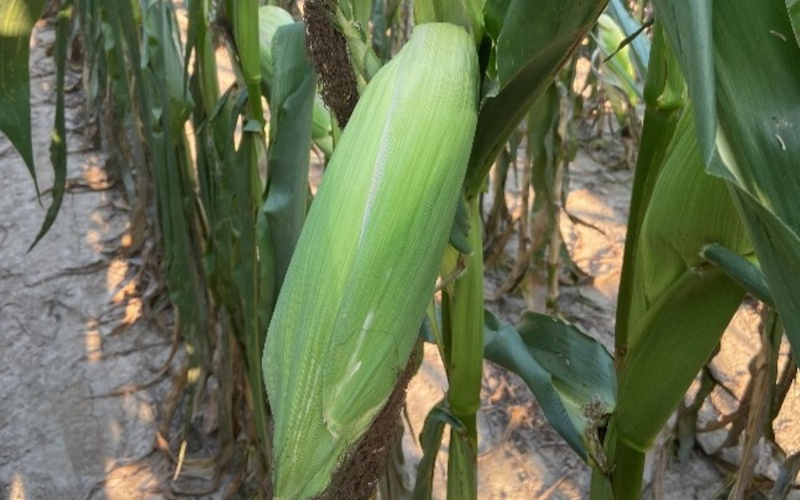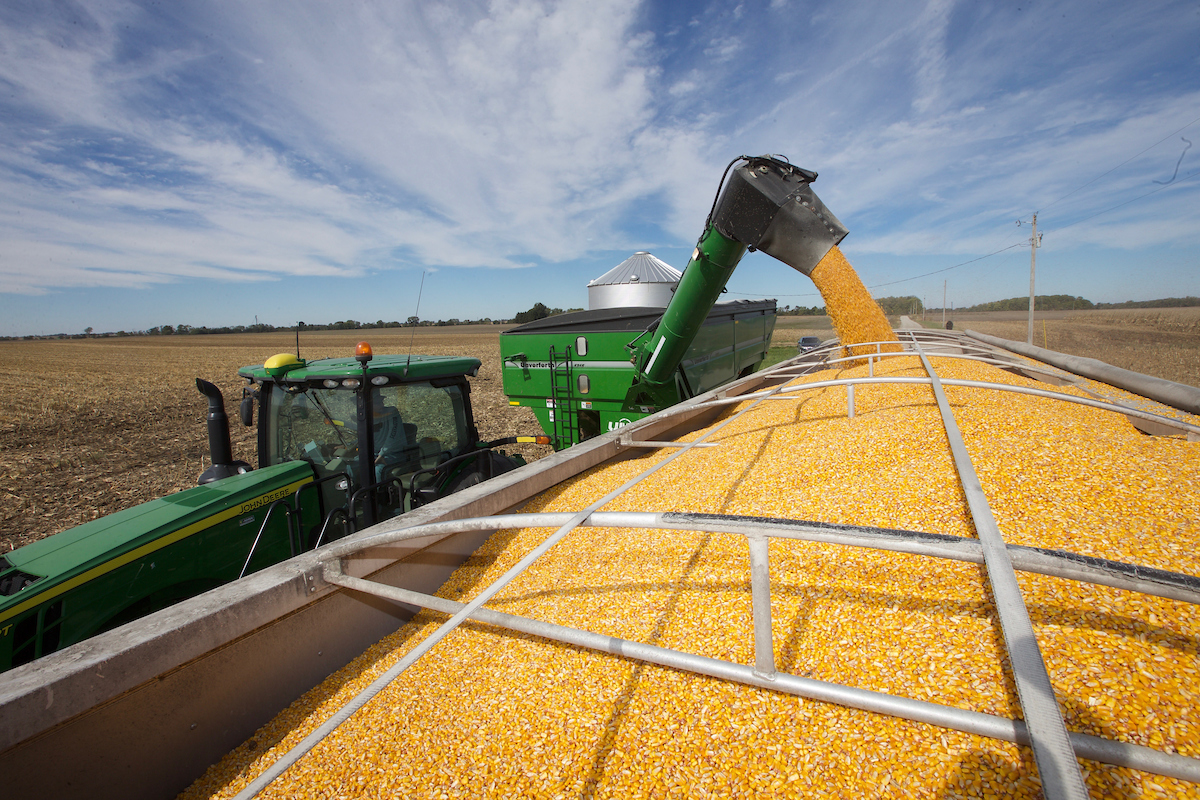Delayed Harvest Considerations for Corn in Indiana
According to the USDA/NASS crop progress and condition report for the week of November 1, Indiana corn harvest progress currently sits at 62% for the state which is 9% behind 2020 and 7% behind the 5-year average.
Delayed corn harvest further exposes the corn plant to unfavorable weather conditions and causes plant quality and stalk integrity to further decrease. Therefore, the longer corn remains in the field, the more susceptible it becomes to significant lodging caused by severe storms and/or wind damage. Delayed harvest also adds additional risk to corn fields that may already have poor stalk integrity due to previous drought conditions and foliar disease (e.g., tar spot) (Telenko and Quinn, 2021). Recent research has shown that corn yield losses can occur between 5 and 10% when late-season lodging occurs due to a delayed harvest (Turner et al., 2021). Furthermore, a corn plant with weak plant integrity is also more susceptible to suffering yield losses due to premature ear drop. Research in both Ohio and Kentucky determined that most corn yield losses from delayed harvest occur when delays are extended beyond mid-November (Thomison et al., 2011; Turner et al., 2021). Delaying corn harvest into late November or early December can result in significant yield losses due to ear and kernel losses at the combine head during harvest, and an increased total of damaged kernels.
Delayed corn harvest as a result of persistent rainfall can also cause grain moisture levels to increase or fail to decrease to a level suitable for minimal grain drying. This may cause farmers to harvest corn at higher moisture levels than intended, thus increasing grain drying costs. In addition, higher grain moisture levels may also negatively impact grain test weight levels. Although grain test weight is not related to high corn yields, it is important when selling grain to local grain buyers. Grain test weight and moisture are inversely related. Therefore, the higher the grain moisture, the lower the test weight at that specific time, yet as the grain dries in either the field or the dryer, test weight will increase if kernel integrity remains (Nielsen, 2021).
Frequent rainfall causing a delay in corn harvest can also cause reductions in grain quality and increase the potential for vomitoxin contamination caused by ear diseases such as Gibberella ear rot (Paul et al., 2021). Frequent rainfall, hybrid susceptibility, and corn ears remaining in an upright position can cause the right conditions for fungal infection, specifically at the base of the ear. Therefore, it may be important to start checking some of the corn remaining in your fields for the presence of ear rots.
The USDA currently still predicts a state record corn yield average for Indiana in 2021, therefore there is likely still plenty of high yield corn out in fields that needs to be harvested in order to avoid yield losses. However, it is still important to remember that harvesting corn on less-than-ideal soil conditions can cause significant compaction, which can cause serious issues in future planted crops. Therefore, in certain situations it may be worthwhile to allow the ground to freeze before harvesting to avoid significant soil compaction issues.
Overall, here’s to hoping that the fall rainfall can finally shut off to allow farmers across the state of Indiana to finish off the rest of this 2021 corn crop and avoid the potential issues that occur when harvest is delayed.
References
Nielsen, R.L. 2021. Grain test weight considerations for corn. Corny News Network, Purdue Extension. https://www.agry.purdue.edu/ext/corn/news/timeless/testweight.html
Paul, P., W.B. Moraes, and M. Luis. 2021. Low vomitoxin levels in corn but rain and delayed harvest could change this picture. Crop Observation and Recommendation Network, Ohio State University Extension. https://agcrops.osu.edu/newsletter/corn-newsletter/2021-37/low-vomitoxin-levels-corn-rain-and-delayed-harvest-could-change
Telenko, D., and D. Quinn. 2021. Are your fields at risk for lodging? Now is the time to identify high risk fields, what is causing the reduced stalk integrity, and management decisions for harvest. Pest and Crop Newsletter, Purdue Extension. https://kernel.sfp.cc/are-your-fields-at-risk-for-lodging-now-is-the-time-to-identify-high-risk-fields-what-is-causing-the-reduced-stalk-integrity-and-management-decisions-for-harvest/
Thomison, P.R., R.W. Mullen, P.E. Lipps, T. Doerge, and A.B. Geyer. 2011. Corn response to harvest date as affected by plant population and harvest. Agron. J. 103(6): 1765-1772.
Turner, A.P., J.J Jackson, M.P. Sama, and M.D. Montross. 2021. Impact of delayed harvest on corn yield and harvest losses. Applied Engineering in Agriculture. 37(4): 595-604.






